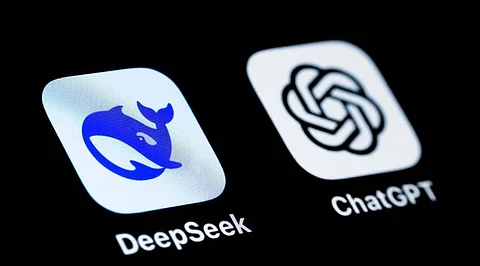

OpenAI has been on the cutting edge of artificial intelligence research by developing state-of-the-art models that challenge the frontiers of digital intelligence. Its expertise involves building AI systems that address applications from natural language processing to reinforcement learning. The GPT models are now famous for the production of incredibly human-like text, probably due to their depth of context understanding and performing a range of language-oriented tasks. The intention behind OpenAI is to enhance the interaction among technology and users in more meaningful and intuitive ways.
DeepSeek is a well-known competitor in artificial intelligence with its techniques based on deep learning algorithms that fetch the best information from large datasets. The platform is tailored for working around difficult data analysis, pattern recognition, and decision-making challenges. DeepSeek promises powerful deep-learning algorithms for the efficient management of these large volumes of data, qualifying it for industry sectors that heavily rely on comprehensive data analysis and well-formed interpretations of complex information.
It is nothing but the most important thing for any successful AI models-the precision with which the work is done by the system. The further long way OpenAI and DeepSeek can be said to go in their precision efforts has been tremendously exhausting to the two organizations. Their long work on refinement of algorithms can guarantee now that the output-again whether it is found in the language generation or data classification-will be up to very high standards of correctness and reliability.
An AI model's data-processing efficiency dramatically affects its effectiveness in practical applications. The two platforms, improvements toward decreasing processing times in order to provide quicker responses and for absorbing increased loads without sacrificing the quality of results, save processing time. Improvements in the handling of data and computational efficiency are paramount to tasks that require responsiveness and fast decision-making.
Scalability is another important consideration when judging AI models. Both OpenAI and DeepSeek have also created infrastructure that can be scaled for a large amount of data without affecting performance consistency. They are architecturally designed in such a way that they can scale themselves according to the increasing data requirements, and they have sufficient possibilities of evolution with expanding digital environments and applications that become ever more demanding.
Such models create a flexible technology used greatly in diverse fields. Autonomous systems employ AI technologies offered by OpenAI to produce intelligent robotics, self-driving cars, and interactively smart home devices. In medicine, OpenAI assists with tools to aid diagnostics, predict patient outcomes, and personalize treatments. Conversely, the creative industries use OpenAI for a generation of arts, music, and literature. Other educational online platforms use its technology to fashion personalized tutoring and automated grading systems that address students' unique learning styles.
DeepSeek really shines in specialized operations requiring the utmost deep analysis of data. Its algorithms are being used in data mining, predictive analytics, and business intelligence for the extraction of actionable insights from large datasets. DeepSeek, therefore, powers in image and video recognition systems that hear object detection, face recognition, and automation in surveillance with great precision. Algorithmic trading, fraud detection, and risk management are other finance-oriented services that use this technology, while in cybersecurity, threat detection, intrusion prevention, and vulnerability assessments are other use cases.
Both OpenAI and DeepSeek build on the foundation of large data collections. The performance of their models depends considerably on how well these models are trained using both high-quality datasets and extensive datasets for training. Data collection for the purpose of creating varied, comprehensive datasets is often resource-intensive but is one of the most important aspects whereby AI outputs can be said to remain true or not. Therefore, consistent updating of datasets with data curation practices is needed to maintain the working of these systems.
One challenge both organizations face is to address bias and ensure fair treatment. AI models might end up absorbing and reproducing from their training data all biases-that consequently lead to tinted or unfair results. On both platforms, these methods are used to minimize any bias through the usage of diverse datasets and continuous monitoring and recalibration. It is this constant focus that enables these organizations to deliver just results in several spheres of application.
Use and compare these models yourself 👉🏽https://amigochat.io/chat/
